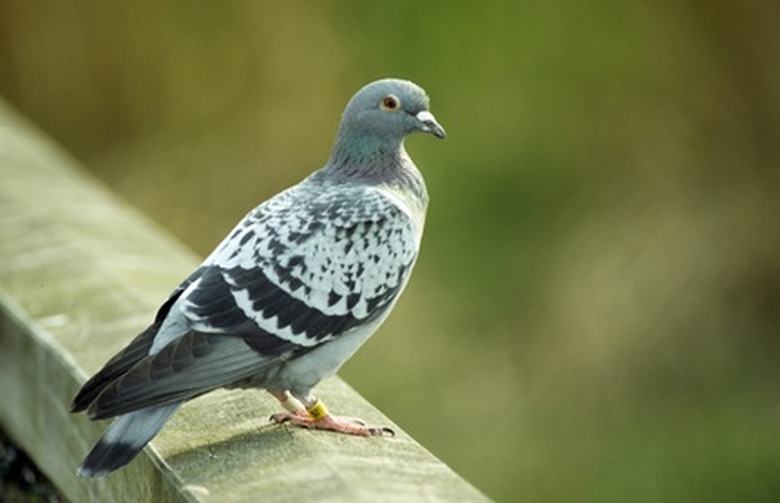How To Build A Pigeon House
Depending on what you do with your pigeons, the birds' house should give them not only plenty of room but the ability to get in and out quickly, easily, and safely. Building the perfect home for pigeons starts with thinking about how you're going to use it, where you're going to put it, and if your area has any special codes regarding keeping birds.
How will you use it?
How will
you use it?
Are you going to be racing pigeons? Will you have homing pigeons? Are you just raising the pigeons as pets? This will determine how often they'll need to get in and out of their coop. If they'll be flying frequently, you don't want to put your pigeon house under any dangerous wires, structures, or other obstacles the birds will have to navigate each time they fly.
If you'll be taking the birds out and putting them back inside frequently, you'll also want to think about how easy it is for you to access the coop and do what you need to do.
Once you've decided how you're going to use your pigeon coop, you can figure out where you want to place it so that it works for you and the birds. Keep it out of the rain but in direct sunlight if possible. Don't forget to think about predators, including slippery snakes, when creating a home for pigeons.
Choose a size and materials
Choose
a size and materials
If your birds won't be spending much time in the coop, they won't need as much room to flap their wings and jump up and down onto perches. A 2 by 2 by 2-foot house might be fine. The size of your coop will obviously depend on how many pigeons you will keep inside it.
If you want your pigeons to have lots of room to move around, consider at least 8 to 10 feet of height. Floor/width size recommendations vary widely on different pigeon websites and forums. Do a web search for the type of pigeons you'll be raising and the recommended coop size and plan on 2 to 3 square feet per bird in a simple pigeon house. If you are planning on keeping food, water, and accessories in the coop, add more space in your coop. Think about including multiple perches to which the birds can fly or jump so they can move around and stay active.
Common materials for pigeon coops are wood and chicken wire. Some people use glass sides and a glass roof to let in sunlight and keep out rain. Screws are better than nails for making sure wood pieces are harder to pull apart. If you use glass, use a sturdy material that won't break easily, especially if predators are a concern.
Put together a home for pigeons
Put together a home for pigeons
Start with the floor, which is often a piece of plywood. Decide if you need the coop to have legs or if you'll be placing it on an existing structure or the ground. If you want legs, screw them into the four corner areas of your floor board. Depending on the size of your coop, you might need six to eight legs.
You can cover the top of the floor board with a waterproof surface for easier cleaning. Attach four pieces of lumber, such as two-by-fours, to the four corners of the coop floor board. Depending on the size of your coop, you may need to add more posts to the middle of each side so that the chicken wire doesn't sag when you attach it. You will also need a door on one side and/or a top you can raise and lower with hinges and a handle.
To make a door on one side, screw in two poles to the center of one side vertically with another piece of wood laying horizontal on top of them. Make a door out of four pieces of wood that will fit inside your door opening, attaching it to the three exterior poles you just attached to the floor board, with hinges. This door should fit snugly into the three poles so that the birds can't get out, and predators can't get in. Once the sides, middle supports, and door piece are attached to the floor board, staple chicken wire around the structure.
Secure the door
Secure
the door
You can create a simple door latch with two eyelet screws, with one placed on the door posts and one of the exterior vertical posts next to it. Thread a piece of wire through and around one of the eyelets that you can then wrap around the other eyelet each time. You can use string or create a door fastener using other ideas or hardware sets from your local home improvement store.
If you will be training or working with your pigeons on a regular basis, you might want a top that lifts open. Screw a piece of plywood the same size as the floor board on top of the vertical support posts.
If you want your coop to open from the top, place four pieces of wood on top of your vertical support posts and then attach a piece of plywood to them using two more hinges. Make sure you can shut and lock the roof to keep predators and kids out of it.
